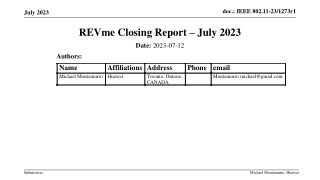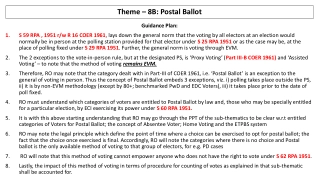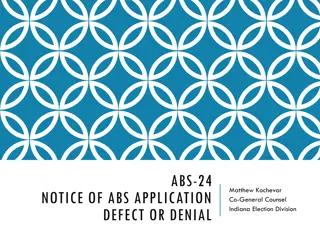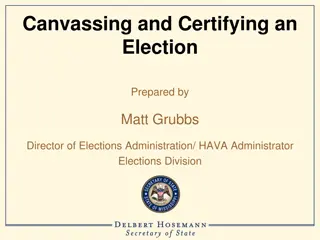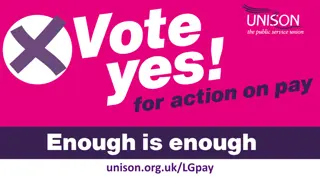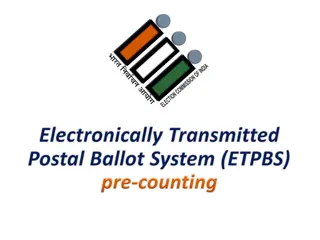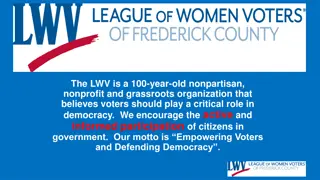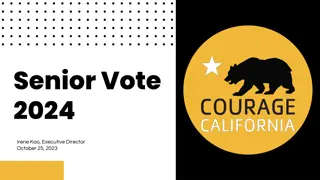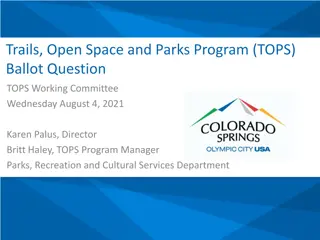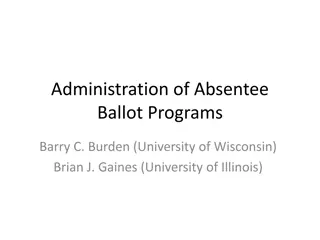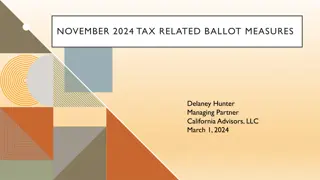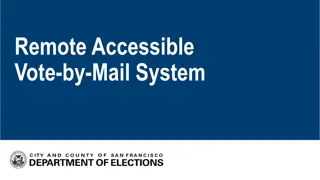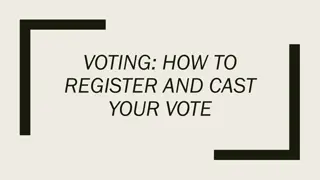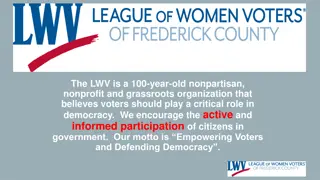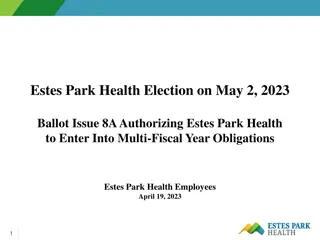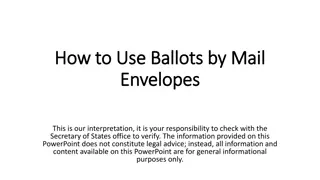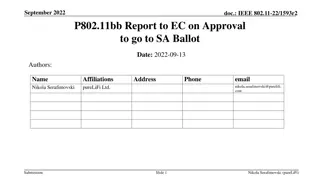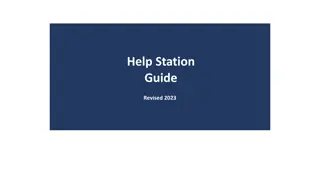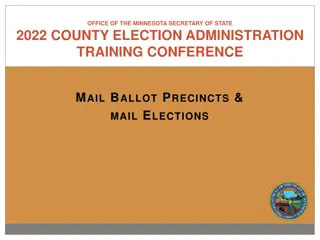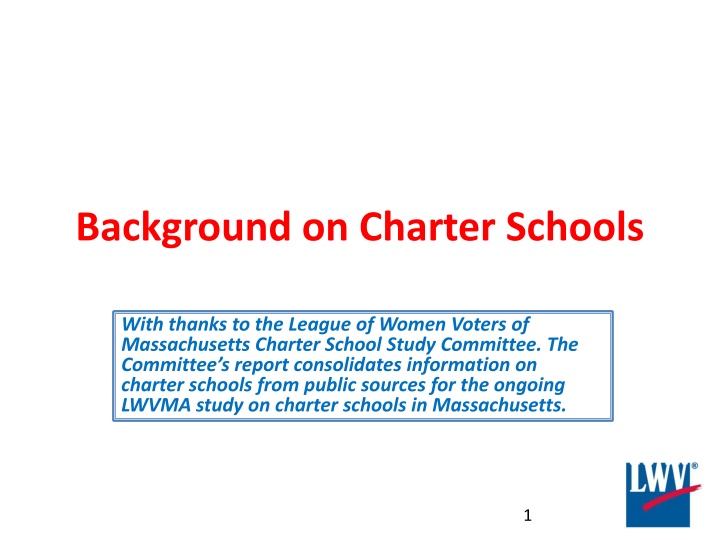
Insights on Charter Schools in Massachusetts: Overview and Statistics
Discover the fundamental aspects of charter schools in Massachusetts, including their purpose, types, and operational status. Explore key information consolidated by the League of Women Voters of Massachusetts Charter School Study Committee to enhance your understanding of the charter school landscape in the state.
Download Presentation

Please find below an Image/Link to download the presentation.
The content on the website is provided AS IS for your information and personal use only. It may not be sold, licensed, or shared on other websites without obtaining consent from the author. If you encounter any issues during the download, it is possible that the publisher has removed the file from their server.
You are allowed to download the files provided on this website for personal or commercial use, subject to the condition that they are used lawfully. All files are the property of their respective owners.
The content on the website is provided AS IS for your information and personal use only. It may not be sold, licensed, or shared on other websites without obtaining consent from the author.
E N D
Presentation Transcript
Background on Charter Schools With thanks to the League of Women Voters of Massachusetts Charter School Study Committee. The Committee s report consolidates information on charter schools from public sources for the ongoing LWVMA study on charter schools in Massachusetts. 1
What are charter schools? Public schools, created to achieve certain goals Publicly funded; free to students More autonomy than traditional public schools Agree to improve student achievement Agreement formalized in charter Laws vary by state 2
Purposes per Education Reform Act Development of innovative programs Innovative learning and assessments Options for parents and students Alternative, innovative methods of instruction and school structure and management Performance-based educational programs Accountable for students educational outcomes 3
Types of Charter Schools in MA Commonwealth charter schools Independent of any school committee Governed by board of trustees Core mission, curriculum, theme, and or teaching method Controls own budget Hires/fires teachers and staff 5-year charter Charter renewal dependent on attracting students and positive results. 4
Types of Charter Schools in MA (cont.) Horace Mann charter schools Operate under state charter and agreement with school districts. Employees may be exempt from certain parts of the collective bargaining agreement but are part of the local collective bargaining unit accrue seniority get, at minimum, salary and benefits of local collective bargaining agreement 5
How Many Charter Schools in MA? 2016-2017 Operating Status Number Operating Commonwealth charter schools 69 Operating Horace Mann charter schools 9 Total currently operating charter schools 78 Charters approved but not yet open 2 Total active charter schools 80 Charters granted but closed or never opened 28 Total charters granted since 1994 108 6
Where Are They? Total operating in 2015/2016: 78 Boston: 22 Springfield: 6 Lawrence: 4 Cambridge, Lowell, New Bedford, Salem: 3 each Barnstable, Fall River, Haverhill, Holyoke, Worcester: 2 each 24 others with 1 each 7
Enrollment Maximum enrollment allowed by current charters Students attending in 2015/16 schoolyear (on 10/1/15) Percent of 2015/16 PK-12 public school population enrolled in charter schools 51,860 40,200 4% Percent of 2015/16 PK-12 Boston public school population enrolled in charter schools 18% 8
Demographics 2015/16 Year MA Charter 25% MA District 19% Boston Charter 31% Boston District 48% First Language not English Limited English Proficient 11% 9% 14% 30% Special Education 14% 17% 16% 20% Economically Disadvantaged 36% 27% 45% 49% African-American 29% 8% 52% 32% Asian 5% 7% 3% 9% White 32% 64% 8% 14% 9
Limiting Quantity Limits on number of charter schools: Limit of 120 72 Commonwealth and 48 Horace Mann schools Net spending cap limits district per pupil payments to 9% of district budget, and to 18% for districts scoring in lowest 10% of state. 10
Limiting Quantity (cont.) At least 2 charters approved each year must be in districts with performance in lowest 10% statewide for last 2 years. For those schools applying that are located in districts that are in the top 10% of performance, only one regional Commonwealth charter school may be approved per year. None in community <30,000 people unless it s a regional charter 11
Who May Apply Any group/entity except for for-profit companies and private/parochial schools Typical: a mix of parents, teachers, non-profit organizations, community leaders May be filed in conjunction with a college, university, museum, or other similar non-profit entity 12
Authorizing a Charter School State Board authorizes charter schools Local district role: comment on Commonwealth schools; approve application for Horace Mann before state approval Board decides based on application, interview, public hearing in district, and public comments. Basis: Shown capacity and ability to establish and operate a successful charter school per criteria in law and regulations. Charter issued to Board of Trustees, an independent state public body. 13
Holding Charter Schools Accountable Commonwealth charter schools are accountable to DESE through annual reports (by August) and the renewal application (every 5 years). Annual reports available to the public: Mission/design elements Student performance data and characteristics Changes in program, organization Teacher evaluation Finances 14
Students Admissions Open to all students Obliged to take all students from the district the charter serves If more apply than seats available, lottery is used Waitlists as of March 2016, per DESE: 32,646 unique students on waitlists 74 of 78 schools had waitlists. 15
Funding Charter Schools Basic Principles Sending school districts pay the charter school the district s per pupil cost for all students in its district attending the charter school. MA implements that by deducting that payment from its funds designated for the district ( Chapter 70 funds ) and sending that payment to the charter school. 16
Sending Districts Contributions Vary District budget composition Amount paid by sending district is based on that district s foundation budget plus any extra local contribution. Includes Funds from the Ch. 70 state aid Funds from the community, including the required local contribution the above-foundation rate Ch. 70 state aid varies, thus funds from districts vary. Ch. 46 funding helps with transition Extra Local Contribution Foundation Budget Ch. 70 State Aid Required local contribution 17
Sending Districts Contributions Vary An Example (2010 Data) Lynn Newton 16000 14000 Total Per Pupil Budget $11,279 Total Per Pupil Budget $14,436 12000 $5,195 $23 10000 $1,207 8000 $8,493 Foundation Budget $11,256 6000 Foundation Budget $9,028 4000 $8,034 2000 $2,763 0 Required Local Contribution Ch. 70 State Aid Extra Local Contribution 18

